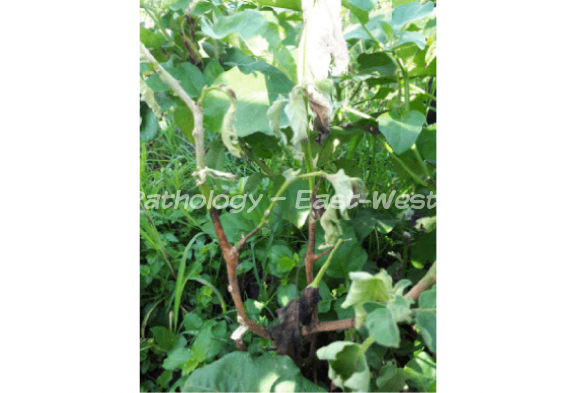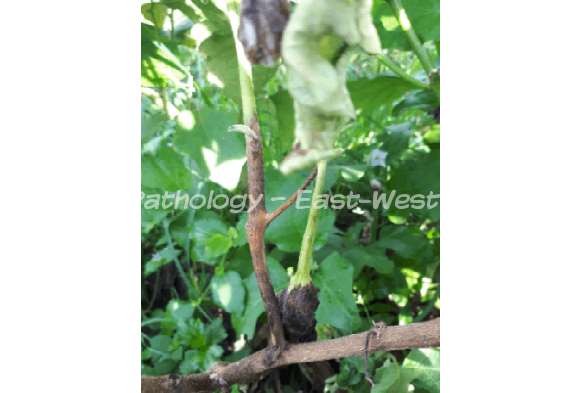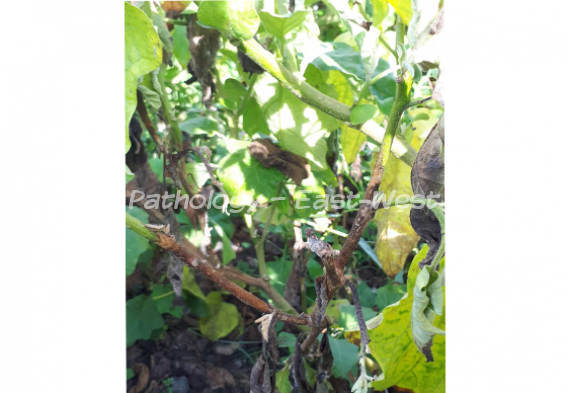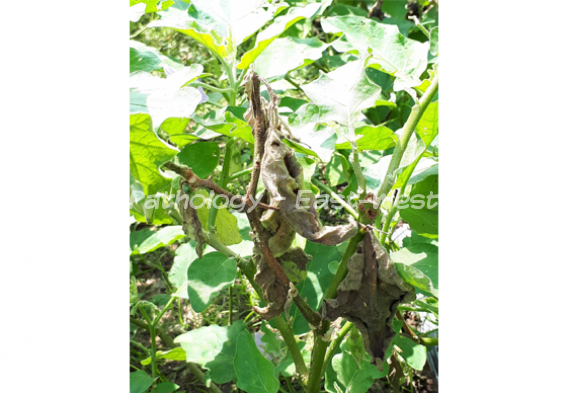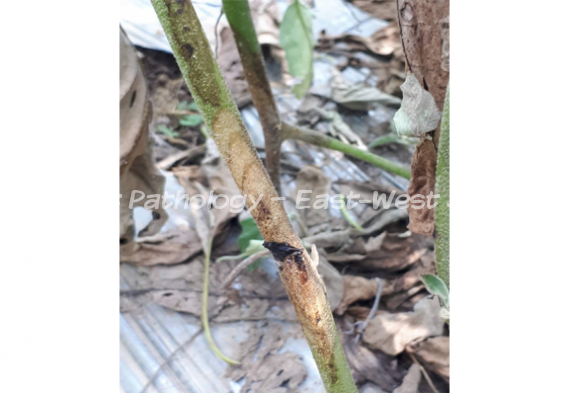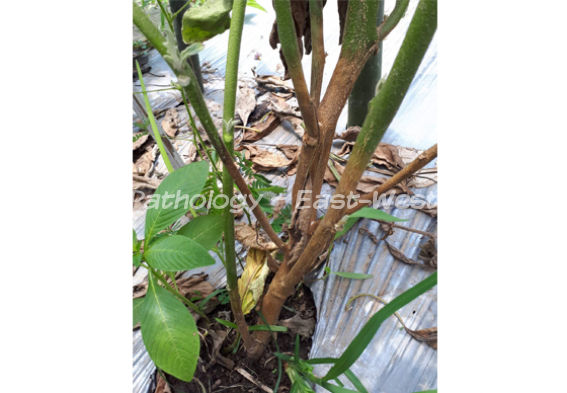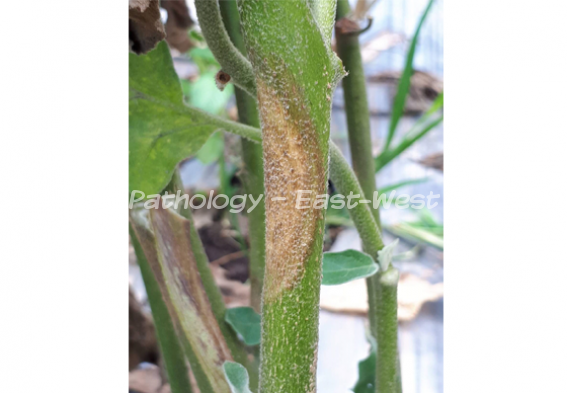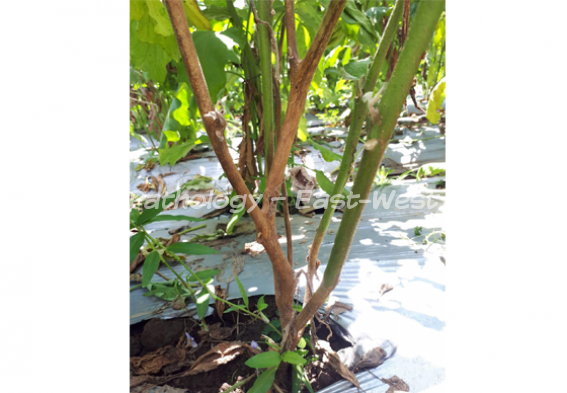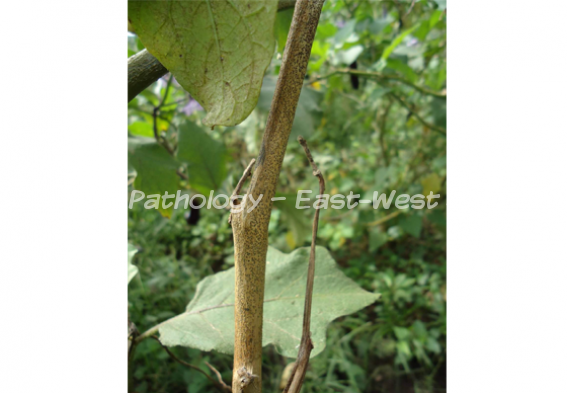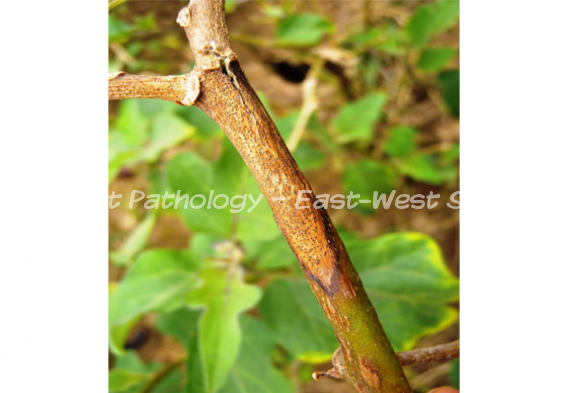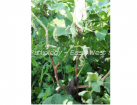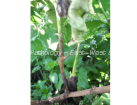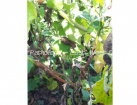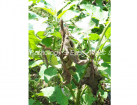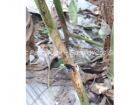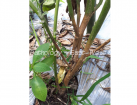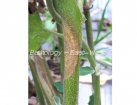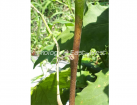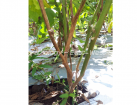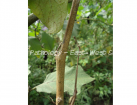Causal Agent:
Fungi (Phomopsis vexans)
| Characteristic Symptoms: | |
 |
Irregular brown to black spots with blackish margins on the leaves. Spots and blighted areas of the leaves may become covered with black, pin-like pycnidia. |
 |
Symptoms on stems and branches are elongated, blackish-brown lesions which often produce pycnidia. Affected stems dry up resulting to wilting. |
 |
On fruits, symptoms appear as sunken greyish spots with brownish halo which later enlarge and coalesce to produce concentric rings of yellow and brown zones. Spots enlarge forming large rotten areas with pycnidia, whole fruit may later become mummified due to dry rot. |
| Conditions for Disease Development: | |
 |
Phomopsis blight infects eggplant and its wild Solanum relatives. It has also been observed on pepper. |
 |
Infection and disease development is favored by hot and humid conditions. Optimum relative humidity for disease development is 55% and above while optimum temperature is 28°C. |
 |
Spores are spread by wind and rain. |
 |
The fungus can also survive on plant debris. |
| Management and Control: | |
 |
Proper land preparation, flooding and plowing to reduce fungus population in the soil. |
 |
Observe crop rotation, plant non-host crops to break the cycle of the disease. |
 |
Avoid excessive moisture, do not use overhead sprinkler. |
 |
Maintain field sanitation, remove infected plants/plant parts and dispose properly by burying in the soil. |
 |
Remove weeds and wild Solanum species that may serve as alternate hosts. |
 |
Preventive application of copper-based fungicides. If infection is observed in the field, alternately apply fungicides with active ingredients of Mancozeb, Pyraclostrobin, Azoxystrobin, Difenoconazole, Tebuconazole and Carbendazim. |
To view other diseases, click here.
Need more help? Ask the Doctor.



